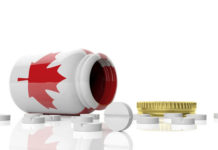16 and 17 prefer nitrous oxide, and adults choose another group of inhalants known as nitrites (alkyl nitrites or cyclohexyl).
Inhalant abuse has decreased among teens and stabilized among young adults. Campbell noted the lack of formal studies that quantify their incidence and prevalence, but added that certain inhalants are “regularly abused by subcultures.” like the gay community, in which “poppers” are frequently used to intensify sex.
The most common inhalants include:
- Volatile solvents that vaporize at room temperatures, like liquid household and industrial products.
- Aerosols that contain propellants and solvents, such as spray paint, deodorants, hairspray, keyboard cleaner and vegetable oil sprays.
- Gases that are found in household or commercial products, including propane lighters, cans of whipped cream and freon.
- Nitrites, commonly known as “poppers,”are industrial-grade chemicals used in odorizers and leather cleaners.
The effects of being under the influence of an inhalant can resemble drunkenness. Telltale signs include slurred speech, light-headedness and euphoria, according to NIDA. Inhalants have also been known to induce nausea and severe headaches.
There can also be serious long-term effects from using inhalants, primarily because inhaling can cut the supply of oxygen to the brain, studies have shown. In some cases, using inhalants can be fatal. For example, inhaling concentrated doses of aerosol sprays can result in immediate heart failure. This syndrome, known as “sudden sniffing death,” can happen after a single hit.
“There are still dangers with these products,” said Campbell, who stressed the importance of awareness and educating the public about the risks of abusing inhalants.















